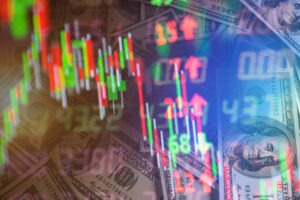Exchange-Traded Reserves (ETFs) have ended up one of the most well-known speculation vehicles around the world. But here’s the capture: not all ETFs are made to break even with. Numerous come with tall administration expenses that eat into your returns over time. The great news is that low-cost ETFs are accessible, and they can spare you thousands of dollars in expenses if chosen shrewdly. Let’s break down how they work, why they’re worth considering, and which ones might be right for you.
What Are ETFs and Why Do Expenses Matter?
ETFs are collections of securities, like stocks or bonds, that trade on a trade fair like customary stocks. They permit speculators to expand their portfolio without buying each stock separately. The key distinction between ETFs lies in their cost ratio—the yearly expense charged as a rate of your add up to investment.
Imagine contributing $50,000 in support with a 1% cost proportion. That’s $500 gone each single year in expenses. Presently, compare that to a low-cost ETF with a 0.05% cost proportion. You’d pay, as it were $25 per year. Over decades, that contrast can include up to thousands, if not tens of thousands.
The Rise of Low-Cost ETFs
Over the past decade, the investing world has seen a gigantic move toward low-cost ETFs. Companies like Vanguard, BlackRock (iShares), and Schwab have made it their mission to keep costs down while giving a solid introduction to worldwide markets.
Low-cost ETFs are particularly alluring for long-term financial specialists. Instead of letting compounding expenses deplete your riches, your cash keeps working for you.
Benefits of Low-Cost ETFs
Higher returns over time: Lower expenses cruel more cash remains in your pocket.
Transparency: Simple to get since they regularly track well-known indexes.
Liquidity: Tradeable like stocks during advertised hours.
Top Low-Cost ETFs Worth Considering
Here are a few well-known ETFs with low-cost proportions that financial specialists frequently turn to:
- Vanguard Add up to Stock Showcase ETF (VTI)
Expense proportion: 0.03%
Tracks the whole U.S. stock market
Offers presentations to huge, mid, and small-cap companies
- iShares Center S&P 500 ETF (IVV)
Expense proportion: 0.03%
Tracks the S&P 500 index
Great choice for speculators who need an introduction to America’s greatest companies
- Schwab U.S. Wide Showcase ETF (SCHB)
Expense proportion: 0.03%
Covers over 2,500 U.S. stocks
One of the cheapest and broadest ETFs available
- Vanguard FTSE Created Markets ETF (VEA)
Expense proportion: 0.05%
Provides presentation to create markets exterior the U.S.
Perfect for speculators looking to broaden globally
- iShares Center U.S. Total Bond ETF (AGG)
Expense proportion: 0.03%
Tracks the U.S. bond market
A strong choice for those needing stability and income
How Low-Cost ETFs Save You Thousands
Let’s put this into perspective. Assume you contribute $100,000 for 30 years:
High-cost support (1% charge, 7% yearly return): Closes up with around $574,000.
Low-cost ETF (0.05% expense, 7% yearly return): Closes up with around $761,000.
That’s about $187,000 more fair since of lower expenses. This case illustrates why cost proportions matter so much.
Things to Watch Out For
Not all low-cost ETFs are made to rise. Continuously check:
Tracking exactness: Does it reflect the record well?
Liquidity: Higher trading volume guarantees a more tightly spread.
Holdings: Make beyond any doubt it aligns with your speculation goals.
Who Should Invest in Low-Cost ETFs?
Anyone looking for long-term development without paying high expenses ought to consider them. Whether you’re an apprentice financial specialist or somebody planning retirement, low-cost ETFs are a savvy way to construct wealth steadily.
Tips for Building a Portfolio with Low-Cost ETFs
Mix U.S. and worldwide value ETFs.
Add a bond ETF for stability.
Rebalance yearly to keep up the target allocation.
Keep costs moo by dodging visit trading.
Are Low-Cost ETFs Always the Best Choice?
While they’re great for detached investing, a few speculators favor effectively managed funds if they believe a manager can outperform the market. But, pondering appears most dynamic directors come up short to beat the market after expenses, making low-cost ETFs a more secure wager for most people.
The Future of ETFs
As competition develops, expenses begin to drop. A few stores, as of now, have zero cost proportions. In the long term, we can anticipate indeed more investor-friendly alternatives, making it less demanding than ever to save cash while investing.
Conclusion
Low-cost ETFs are a game-changer in the world of contributing. They enable regular financial specialists to access wide markets at minimal costs, allowing them to accumulate wealth without it being eroded by unnecessary expenses. By choosing ETFs wisely, you can spare thousands of dollars and secure a brighter financial future.
FAQs
What is considered a low-cost ETF?
Any ETF with a cost proportion of 0.10% or lower is, for the most part, considered low-cost.
Can I lose cash in low-cost ETFs?
Yes, since they track markets that can go up or down. Moo has taken a toll; it’s not a cruel risk-free.
Are low-cost ETFs superior to mutual funds?
In most cases, yes. ETFs frequently have lower expenses, superior cost-effectiveness, and more flexibility.
Do low-cost ETFs pay dividends?
Many do, particularly those that track stock files. Profits can be reinvested for growth.
How much cash do I require to begin contributing to ETFs?
You can begin with the cost of one share, regularly below $100, making them exceptionally affordable.



